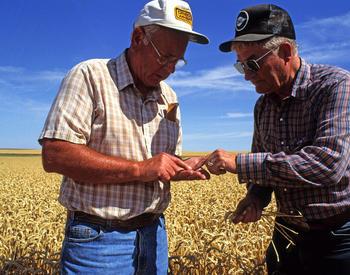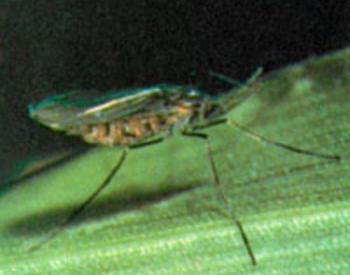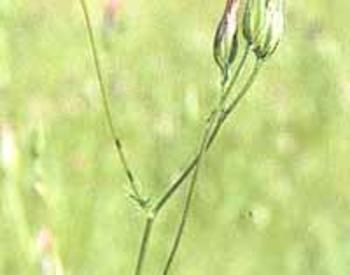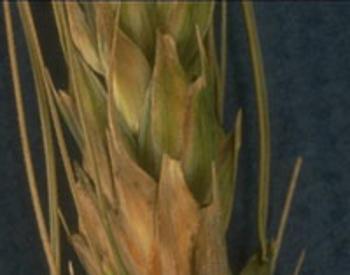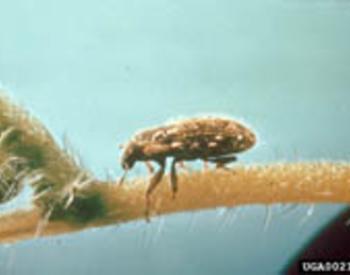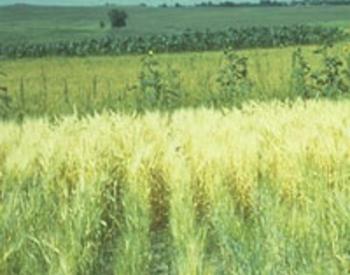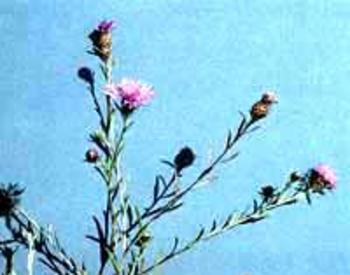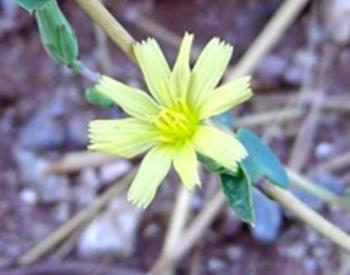Rattail fescue weed problems are a growing concern of farmers, field consultants, and OSU weed scientists. An annual grassy weed, it is on the increase here in Umatilla County particularly in fields using direct-seed cropping systems. Reduced tillage and a greater reliance on herbicides in the direct-seed system appear to have tipped the scales in favor of this annual fescue. Rattail fescue has been in Umatilla County at least 20 years, and likely much longer.
A European native, it is widely distributed throughout North America. It is common in southern Europe, Asia, Australia and the Americas. It is found in habitats ranging from sagebrush to chaparral-mountain shrub to annual grasslands. It shows a preference for disturbed sites in range conditions.
Rattail fescue, an annual, begins growth in spring and matures early. It can reach up to 2 feet tall. Its narrow leaf blades are folded and hairless. Seed heads are in a slender panicle up to 8 inches in length. Seeds have 5/16 to 3/8 inch awns.
OSU Weed Scientist, Dan Ball, researched rattail fescue control in chemical fallow. The 2002 study shows that rattail fescue appears to be tolerate to Roundup rates typically used for control of volunteer cereals and downy brome in fallow, and burn-down situations. Only the highest rates of glyphosate (Roundup or Engame) provided fairly good control at 30 days after treatment.
Early Imazamox (Beyond) applications have controlled greater than 90% of rattail fescue, but later applications are largely ineffective (60 to 75% control).
Effective control of rattail fescue has recently become an issue in direct-seed cropping systems. Since tillage is not used to control weeds, reliance on herbicides, particularly glyphosate (Roundup®), is required. Rattail fescue appears to tolerate the Roundup rates typically used for control of volunteer cereals and downy brome in fallow, burn-down situations. To determine appropriate treatments for control of rattail fescue in chemical fallow, a trial was conducted in 2002 at a dryland site near Pendleton, OR. All treatments were applied in 10 gallon per acre water at 30 p.s.i. spray pressure.
| Treatment1 | Rate (product/A)2 | Rattail fescue control 14 DAT (%)3 | Rattail fescue control 30 DAT (%) |
|---|---|---|---|
| Roundup UltraMax® | 13.0 oz (16) | 88 | 70 |
| Roundup UltraMax+AMS | 13.0 oz (16) | 88 | 74 |
| Roundup UltraMax | 16.2 oz (20) | 93 | 83 |
| Roundup UltraMax+AMS | 16.2 oz (20) | 93 | 92 |
| Roundup UltraMax | 25.9 oz (32) | 95 | 83 |
| Roundup UltraMax | 32.4 oz (40) | 98 | 95 |
| Engame® | 46.2 oz (20) | 96 | 93 |
| Engame | 73.8 oz (32) | 98 | 98 |
| Spartan® +Roundup UltraMax | 4oz + 16.2oz (20) | 88 | 66 |
| Gramoxone Extra | 1.6 pt | 90 | 64 |
| Gramoxone Extra+Sencor® | 1.6 pt +5.3oz | 97 | 76 |
| Gramoxone Extra+Sencor | 2.0 pt + 8 oz | 97 | 81 |
| Surefire® | 1.3 pt | 90 | 65 |
| LSD (0.05) | 9 | 10 |
When evaluated 30 days after treatment, control of rattail fescue was inadequate at rates typically used for control of downy brome and volunteer wheat (16 to 20 oz/A of Roundup Original®). A high degree of weed control (> 95%) is necessary to prevent rattail fescue seed production in chemical fallow. The highest rate of glyphosate (Roundup or Engame) provided fairly good control of rattail fescue. Addition of AMS appeared to improve weed control. Addition of Spartan to the spray mixture appeared to reduce rattail fescue control, possibly due to an incompatibility in the spray tank mixture. Gramoxone or Surefire treatments did not provide adequate rattail fescue control when evaluated 30 days after treatment. Observation of the rattail fescue in this trial revealed that regrowth and subsequent weed seed production occurred if not adequately controlled.
- 1All treatments except those containing Roundup UltraMax received NIS at 0.5% v/v (2 qt/100 gal). AMS - ammonium sulfate applied at 8.5 lb/100 gal.
- 2Product rates per acre for Roundup UltraMax and Engame are followed, in parentheses, by equivalent product rates for Roundup Original.
- 3Evaluated 14 and 30 days after treatment (DAT).
